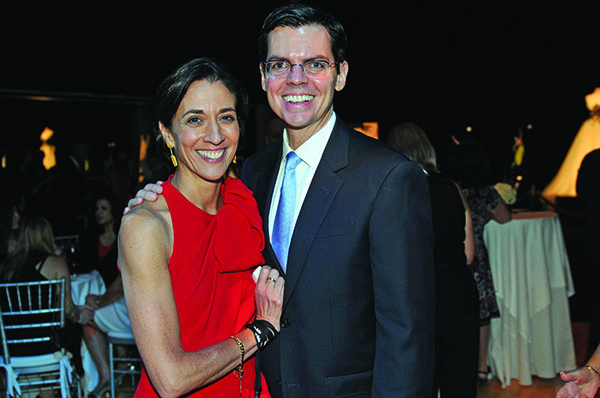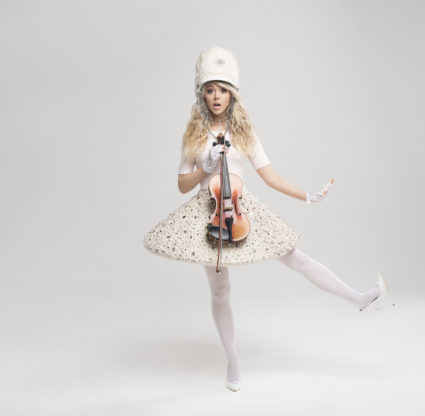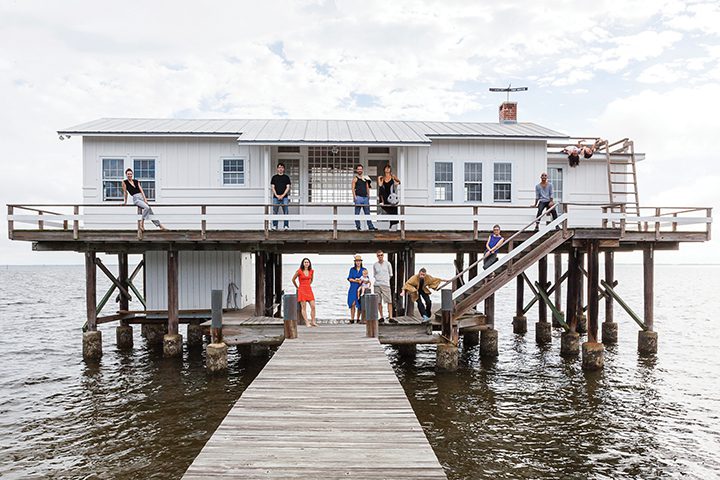When Lourdes Lopez first stepped into the Philharmonic Center for the Arts last November, she felt a sudden rush of déjà vu. Yes, she concluded, after surveying the stage and dressing rooms, she’d been there before, as part of a New York City Ballet touring ensemble.
Add that unexpected familiarity to the list of reasons why Lopez, 54, may be a well-chosen match to be the artistic leader of Miami City Ballet, the acclaimed troupe that maintains a Southwest Florida base at the Phil. The Cuban-born, Miami-raised Lopez succeeds company founder Edward Villella, 76, whose reign ended last year after he agreed to retire following pressure from board members who wanted to bring in new, and presumably younger, blood.
Lopez is treading lightly this season. Dancers had been devastated by the board’s actions and Villella’s abrupt decision to leave last Labor Day weekend—eight months before his contract ended. Lopez decided to honor Villella’s 2012-13 performance lineup and avoid further shakeups.
But she’s bursting with ideas to expose Southwest Florida audiences to new, cutting-edge works and to deepen Miami City Ballet’s community ties.
Joining her is new Executive Director Dan Hagerty, who’s working to build a stronger fi nancial base—he inherited a company $3 million in debt—and to help Lopez make Miami City Ballet a part of the region’s fabric—not a fl y-by-night performance group that hits Alligator Alley as soon as the curtain falls.
“We want to be a more open company that the community feels invested in,” says Hagerty, 40, who was the director of individual campaigns at the John F. Kennedy Center for the Performing Arts in Washington, D.C., before joining Lopez and MCB last summer.
So just how do you get a community excited about ballet?
You start by rethinking what audiences see on stage.
“Evolution is very important. I think it’s important for dancers. I think it’s important for the audience. I think it’s important for the art form,” Lopez says.
She wants to bring the dance world’s current choreographic stars to Miami, Naples, Palm Beach and Fort Lauderdale, exposing audiences to new ideas, images and understanding of what ballet looks like, circa 2013.
“It’s like having a food you’ve never tasted before,” says Lopez.
Miami City Ballet is firmly rooted in the tradition of George Balanchine, the pioneer of neoclassical ballet, a technically demanding, modern-dance-infused style that largely strips ballet of plot and pantomime and celebrates movement and athleticism. The company’s repertoire consists largely of the works of Balanchine, his collaborator Jerome Robbins, classic ballets such as Swan Lake, and a sprinkling of other well-established dancemasters such as Paul Taylor and Twyla Tharp.
Lopez knows the works well. Like Villella, she had danced for Balanchine and performed principal roles in many of the ballets that headline Miami City Ballet’s seasons. She has no intention of scrapping those beloved standards. But she’s ready to introduce a new body of work.
“There are so many works from the late 20th century that Miami City Ballet hasn’t done and the audiences haven’t seen,” she says, ticking off a list of choreographers: William Forsythe, Alexei Ratmansky, Nacho Duato and Christopher Wheeldon, with whom Lopez co-founded Morphoses, an ensemble that is pushing to “revitalize” dance through cutting-edge works and cross-disciplinary collaborations. Lopez plans to maintain her role as Morphoses’ director and bring the company to Miami.
Her vision, she recognizes, places her on something of a tightrope; it’s a fine line, she says, between feeding her audiences what they love while tempting them to nibble on something new.
“The wonderful thing about a mixed-bill repertoire is there’s something for everybody,” she says.
If last season is any indication, there’s a good chance Naples audiences will respond well to novelty on stage. Villella had begun introducing new works, too, commissioning 26-year-old British wunderkind Liam Scarlett to create a work for his troupe. The crowd at the Phil roared with approval at his Viscaya following its premiere here last January.
“She’s broadening the repertory, which is welcoming to us,” says Kathleen van Bergen, the Philharmonic Center’s executive director, who says she wants to support Lopez’s artistic vision and meet the expectations of Southwest Florida patrons.
What audiences see on stage is only part of Lopez’s plan for engaging her communities.
“I don’t want Miami City Ballet to be a company that comes in and dances and goes out,” Lopez says.
The troupe traditionally materializes for two performances of each concert (the season’s final one is April 2 and 3) with little interaction aside from pre-performance talks.
Lopez isn’t sure what form community relations will take, whether it’s workshops or demonstrations or even flash mobs like the one her dancers joined in Miami’s design district shortly after her arrival—helping to squelch stereotypes of elitist ballerinas.
“The dancers were psyched. They’re young and this is what they want to do,” she recalls.
Lopez plans to assemble “think tanks” in each of the communities her company serves, groups of well-connected and culturally minded individuals who can help develop outreach ideas and breathe life into what she called a “sterile” relationship, at least as far as the Southwest Florida market is concerned.
“How do I get them to feel about Miami City Ballet as they do about the Heat or the Gators?” she wonders.
Van Bergen welcomed the idea.
“Two decades is a lot of time to invest in a community,” she says of MCB’s relationship, established by her predecessor Myra Janco Daniels and Villella. “I am pleased to hear they are eager and open to redefining it.”
Part of the redefinition might involve collaborations with other arts groups. The Naples Philharmonic Orchestra is at the top of Lopez’s list.
“You have an extraordinary orchestra,” says Lopez, who heard the symphony for the first time over Thanksgiving weekend during a performance of The Nutcracker. “I’ve been listening to The Nutcracker since I was 16 years old, but there were things that I’ve never heard before.”
She shared her appreciation with van Bergen following that show. Though no formal plans were crafted, the potential is exciting for Southwest Florida audiences.
“When you can take the physical artistry of dancers on stage and the sonic artistry of our orchestra, special things can happen,” van Bergen says.
The company’s primary motivation for audience-building may be one of artistic preservation and cultural growth, but deeper ties can yield bigger donations, too, and that’s something the Miami City Ballet sorely needs.
MCB last year had tumbled $3 million into the hole, a trend that Kennedy Center President Michael Kaiser started to reverse last summer during a stint as special consultant. Kaiser nudged his own fundraising guru Hagerty, whose Kennedy Center team amassed $40 million in contributions last year, to seek the executive director’s job. Hagerty came on in October and immediately started re-thinking the Miami City Ballet funding base. Among his ideas is to create new, entry-level donor positions starting at $50.
Like Lopez, he wants audiences— and potential audiences—to feel invested in the company.
“Lourdes talks about embracing the community and in doing so, the community will embrace you back,” Hagerty says.
The company’s new vision is already gaining momentum. In December, the John S. and James L. Knight Foundation announced it was awarding MCB a $5 million grant to help Lopez create community outreach programs, build its repertoire and commission new works from the world’s leading choreographers.
From backstage at the Phil, the first sounds of orchestra members warming up started to waft through the house—those snippets of the score that build excitement for performers and audience members alike. Lopez’s excitement is visible, too, as she considers all the possibilities for this troupe, which she describes as young, energetic and as unified as a family.
“There’s so much that can be done,” she says. “All I see is potential.”





